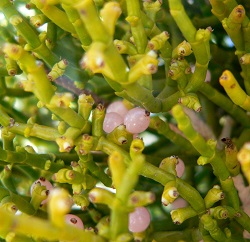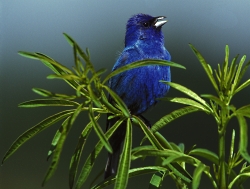Audio: mp3 

Cygnus columbianus
Courtesy US FWS
Tim Bowman, Photographer
Hi, I’m Holly Strand.
Each year we celebrate Valentine’s Day by expressing our love and devotion to a significant other. While humans are the only species that actually celebrate it, we aren’t the only animals who bond together as couples. Monogamy–or long term pair bonding as animal behaviorists call it–is practiced by over 90 % of birds. Along with a modest number of mammals, including wolves, beavers, voles and gibbons. Even a few fish pair up.
Monogamy may have evolved for different reasons among different groups of animals. For some, female dispersal may have played a role. If females are few and far between–as is the case with white tail ptarmigans–there is a tendency to pair up. Perhaps additional potential mates are too far away too bother. For males, monogamy can save a lot of time and energy. Monogamous males don’t have to fight over females or bother with first time courtship rituals. And by closely guarding a single female , males can protect their genetic investment.
There are advantages for females too. With a mate, you can get a little assistance around the nest or den. Male partners can help incubate eggs, guard against predators and help feed the kids. The fact that male and females are equally suited to care for chicks may explain why monogamy is so much more common among birds. The male improves his chances for reproductive success by investing in just one female’s little ones. The situation is different in mammals. Mammal males just can’t step in and help as much with gestation and lactation. So perhaps that’s why only 3% of mammal species form pair bonds.
The offspring of monogamous pairs tend to be pretty helpless at birth. Having two caregivers means that the you can take more time to mature. This long, slow development leads to larger brain sizes. Humans demonstrate this phenomenon very well as we parent our children longer than any other species on earth!
The tundra swan is Utah’s best example of monogamy in the wild. Young tundra swans date around a bit when they are young, but they eventually settle down with a single mate for life. They build and defend a nest together and raise the kids. But then they stick together the rest of the year as well. Greetings and courtship rituals such as head bobbing and dipping and ritual bathing strengthen their commitment toward each other.
You can see these beautiful swans in massive numbers twice a year when they migrate through Utah. Tens of thousands of them stop by the Great Salt Lake on their way to either the Arctic tundra or to central California.
For sources, pictures, and archives of past programs, go to www.wildaboututah.org
For Wild About Utah, I’m Holly Strand.
Credits:
Image: Courtesy US FWS, images.fws.gov
Text: Holly Strand
Sources & Additional Reading
Limpert, R. J. and S. L. Earnst. 1994. Tundra Swan (Cygnus columbianus), The Birds of North America Online (A. Poole, Ed.). Ithaca: Cornell Lab of Ornithology; Retrieved from the Birds of North America Online: https://bna.birds.cornell.edu/bna/species/089
Mocka, Douglas, and Masahiro Fujiokab. 1990. “Monogamy and long-term pair bonding in vertebrates” Trends in Ecology & Evolution. Volume 5, Issue 2, February 1990, Pages 39–43
Reichard, Ulrich and Christoph Boesch. 2003. Monogramy: mating Strategies and Partnerships in Birds, Humans and Other Mammals. Cambridge University Press.
Schultz, Susanne and Robin I.M. Dunbar. 2010. “Bondedness and sociality”
Behaviour, Volume 147, Number 7, 2010 , pp. 775-803(29).
Schultz, Susanne and Robin I.M. Dunbar. 2010. Social bonds in birds are associated with brain size and contingent on the correlated evolution of life-history and increased parental investment. Biological Journal of the Linnean Society. Volume 100, Issue 1, pages 111–123, May 2010.






